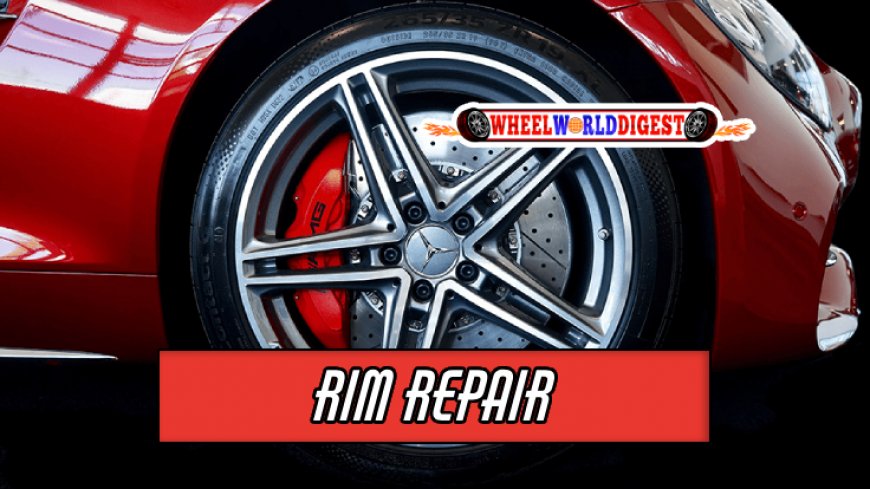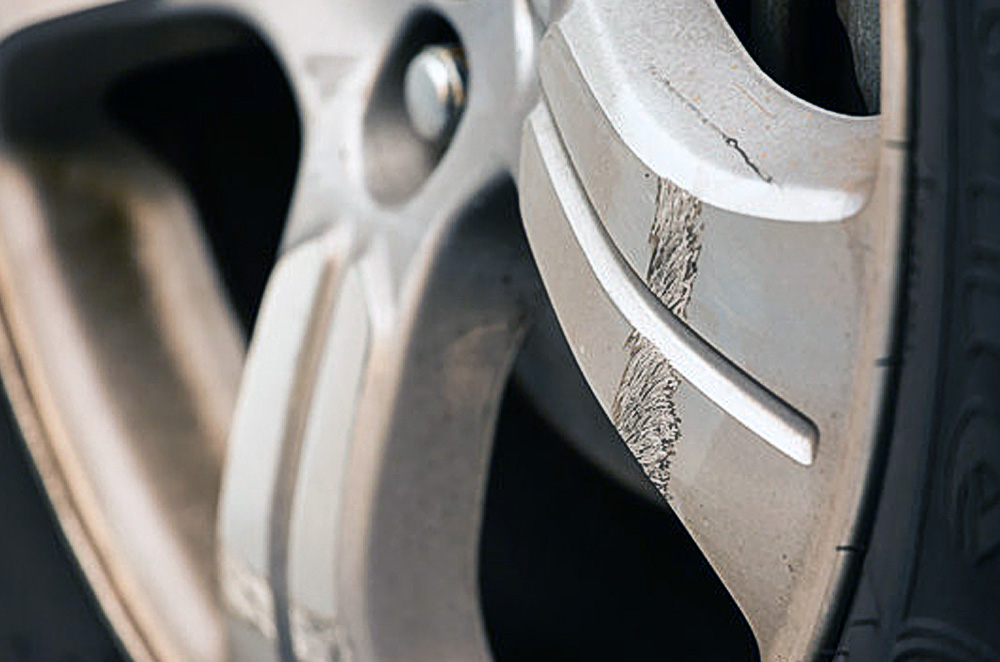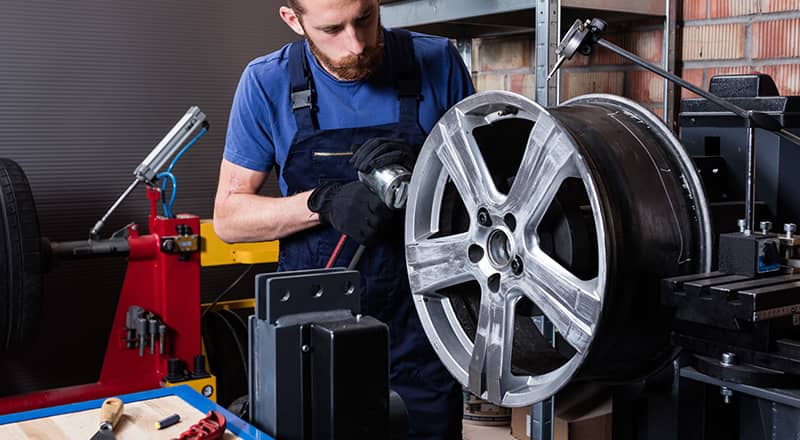Master the Art of Rim Repair - Identifying Damage, DIY Fixes, & More
Delve into the world of rim repair. Learn to identify damages, implement DIY fixes, and understand when professional help is required.

Rim Repair, once perceived as a hush-hush art, has today become accessible for anyone passionate about their wheels. From hidden damage detection to hands-on DIY fixes, understanding the nuances of repairing rims can transform anyone into a 'go-to' person for minor rim emergencies.
Unveiling the Art of Rim Repair
Adept at dealing with rim damages? Save yourself from pricey professional repair services by learning the convoluted yet fascinating process of rim repair. To help you take proactive measures, this in-depth guide demystifies the process.
Table of Contents
- Identifying Rim Damage
- Common Types of Rim Damage
- DIY Rim Repair
- When to Seek Professional Rim Repair
- Preventing Rim Damage
- Reinforcing Your Rim Repair Knowledge
Identifying Rim Damage

The first step in mastering the art of rim repair requires a keen eye for detail. Recognizing the signs of rim damage paves the way for timely intervention and repair. Here are some common indicators that your rim needs attention:
- The steering wheel vibrates, particularly at higher speeds.
- There's an unusual amount of tire wear and tear.
- Your vehicle is pulling to one side when driven.
- A noticeable decrease in fuel efficiency occurs.
All the above signs may indicate potential rim damage. They underscore the need for urgent inspection or immediate action to prevent further harm and costly repairs.
Rim Damage Inspection
Conducting a physical examination of the rim is the next important step. Look for visible issues like cracks, bends, and scrapes. If a visual inspection doesn't reveal anything, go for a 'spin test.' In this process, your wheel is spun at high speeds using a machine to check for any imbalance that indicates a bent rim.
Common Types of Rim Damage

Rim damage can come in different forms, each requiring a distinct kind of repair.
- Bent rims: Often caused by potholes or curb impact, these can lead to vibration issues and tire wear.
- Cracked rims: Generally a result of hitting a sharp object at high speed, these demand immediate attention to prevent hazardous situations.
- Scraped rims: Mostly cosmetic issues caused by scuffing against a curb, they can however erode if left untreated.
Notably, this list is not exhaustive, but understanding the most common types of damage is a solid starting point for your journey into the world of rim repair.
DIY Rim Repair

If you've ascertained that your damage is a minor bend, scrape, or crack, it may be possible to tackle it yourself. Here, it's worth mentioning that DIY rim repair is better suited for alloy wheels as they're easier to work with compared to steel wheels.
Bent Rim:
Bent rims can often be straightened using a hydraulic press. It's essential to warm the rim first before applying pressure. Rectifying a minor bend helps restore the wheel balance, thus averting further damages to the vehicle.
Scraped Rim:
The sight of a scraped wheel can be disheartening for any car owner. Yet, it's one of the easiest things to fix. Just use a bit of sandpaper to smoothen the affected area, follow up with a filler if needed, and finish with correct paint and clear coat. Remember, patience is vital here, both in sanding the rim evenly and allowing sufficient drying time between each step.
Cracked Rim:
Cracked rims demand caution. Minor, non-structural cracks might be amendable with epoxy and some sanding; however, if the crack is deep and near the base or spokes of the rim, seeking a professional's assistance is advised.
When to Seek Professional Rim Repair

While adopting a 'Do it Yourself' approach might appeal to some, there are instances where seeking professional help is a far better option. Significant bends or deep cracks that are closer to the hub or spokes of a wheel, for example, demand professional expertise. Also, repairing a Speedline or a BBS type of split-rim calls for specialist intervention.
Choosing a Professional Rim Repair Service
Several factors warrant careful consideration when choosing a professional rim repair service.
- Firstly, verify credentials. Make sure the company holds proper licensing and insurance.
- Next, probe into their experience and reputation. Online reviews and customer testimonials unveil a lot about their credibility and quality of service.
- Lastly, clarify their repair process. A reliable service should be transparent about their methods and willing to keep you updated throughout the repair.
In a nutshell, when it comes to professional repair, quality of service trumps cost considerations.
Preventing Rim Damage
`; Prevention is indeed better than cure. While not all rim damage can be avoided, especially those caused by unpredictable road conditions, following these pointers can definitely mitigate the risk:
- Keep your tire pressure at the recommended level. Over or under-inflation may increase the impact of road anomalies on the rims.
- Slow down when driving over poor road surfaces, potholes, or speed bumps.
- Avoid hitting curbs, especially when parking. This is one of the most common causes of scraped or bent rims.
- Regularly align and balance your wheels. This ensures even tire wear, thus minimizing stress on the rims.
Reinforcing Your Rim Repair Knowledge
Mastering rim repair is no less than embarking on a lifelong journey of learning. As you acquire new skills, remember, practice makes perfect. Working with a more experienced buddy, joining online automotive forums, or attending local workshops can help broaden your understanding and reinforce your hands-on capability.
Bolstering Rim Repair Confidence
While honing your rim repair skills, remember to set realistic expectations. Small victories such as successfully straightening a minor bend, remedying a scrape, or identifying a hard-to-spot rim damage can give you a great confidence boost. As your confidence grows, you'll find that diagnosing and treating rim problems becomes second nature.
On the other hand, don't be disheartened by occasional failures. Mistakes are an inherent part of the learning process. What matters is learning from those mistakes and continuously improving your skills.
In conclusion, the key to mastering the art of rim repair rests not just in understanding the techniques but also in recognizing one's limitations. Acknowledging when to call in the professionals and when to put your DIY skills into action essentially requires experience, judgment, and a bit of automotive intuition.
What's Your Reaction?









































































